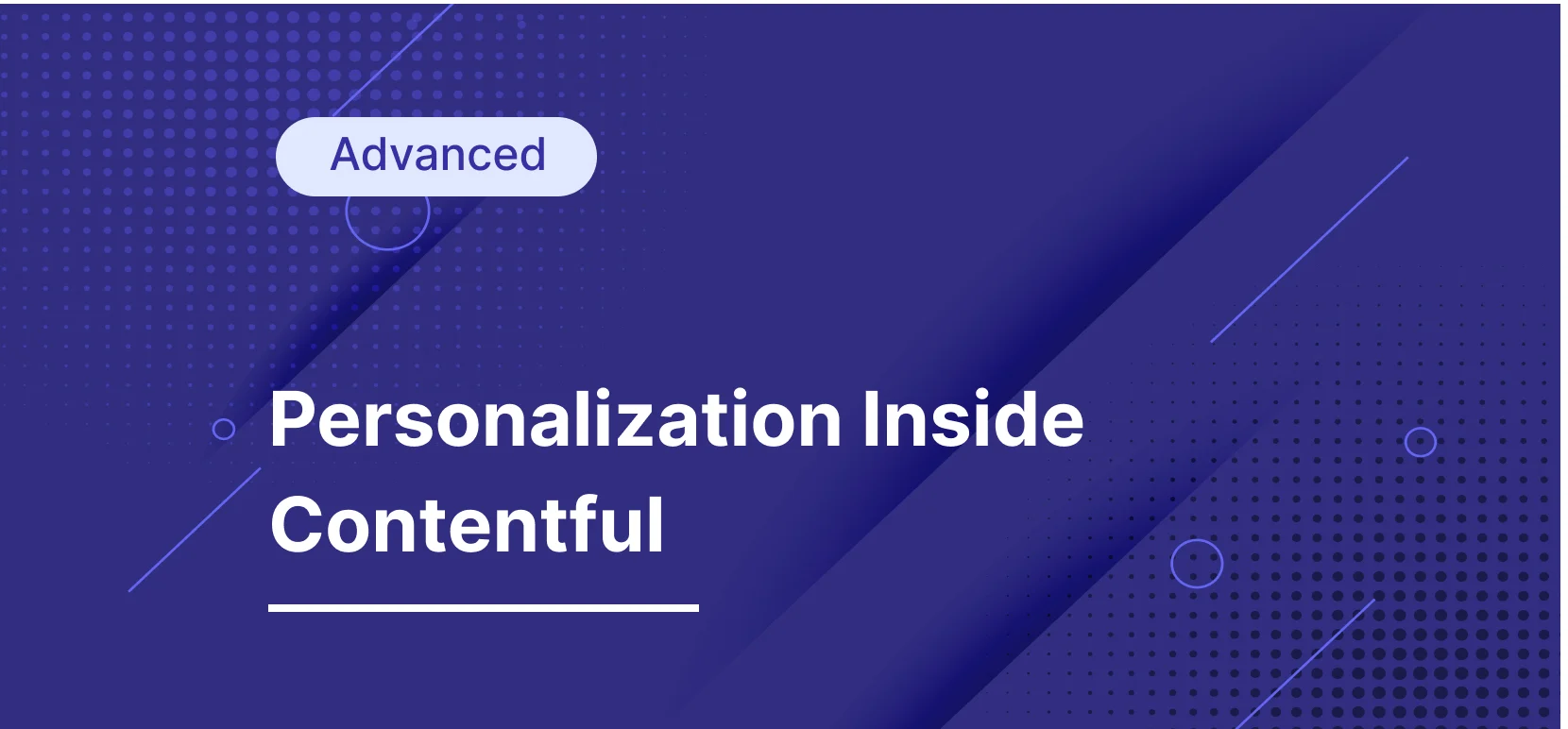- Segmentation
Why You Should Segment Your Audience by Behavior (According to Data)


As marketers who got into personalization to better connect with customers, we were curious about how people use our platform to connect with theirs.
To help other marketers better segment their audiences, we dove into data on thousands of Ninetailed experiences.
This allowed us to uncover how Ninetailed power users segment their audiences.
This article is a quick snapshot of our recent Segmentation Report, presenting our findings around behavioral segmentation. Here’s what we found.
The Top 5 Segmentation Variables in 2024
In the past couple of years, there’s been a drastic shift in marketing spend from paid ads to organic content. Consumers are seeking more personalized experiences from new and familiar companies alike. This demand puts more pressure on marketers across industries to tailor content to their customers’ needs. Before we reveal how each industry segments, here are the general top segmentation variables:
22.6% of all companies in our data set segment by location
18.2% of all companies in our data set segment by behavior
18.0% of all companies in our data set segment by page visit
14.3% of all companies in our data set segment by paid traffic
5.5% of all companies in our data set segment by shopping data
Our Take:
These segmentation variables dominate website content personalization due to their direct impact on user experience, relevance, and higher ROI.
Behavioral segmentation, used by 18.2% of companies, focuses on user actions, enabling marketers to predict future behavior and personalize content based on past interactions, thereby increasing conversion rates.
Behavioral Segmentation Among B2B SaaS Companies
Between the rapid development of AI, access to affordable development resources, and demand for software solutions, the number of B2B SaaS companies has skyrocketed. In fact, according to Statista, 30,000 new SaaS companies entered the market in 2023, growing to over 70,000 in 2024.
As the market becomes more competitive, companies need to be smart about how they’re targeting each of their customer segments. Many B2B SaaS products serve many industries and use cases, making it essential that they tailor their approach to each segment. To stand out in 2024, here are the top five ways B2B SaaS companies are segmenting their audiences on Ninetailed:
Behavior — 22.7%
Firmographic — 21.1%
Page Visit — 16.5%
Location — 10.3%
Technographic — 6.7%
Behavioral segmentation involves segmenting an audience based on what they do. It can include activities such as purchasing habits, product or content usage, preferred media, etc. It helps companies better understand their audience and tailor their messaging.
Our Take:
Behavior is a great variable for marketing because it can inform marketers about intent, buyer journey stage, and preferences.
However, we’re seeing more companies use it for customer experience and product development.
Behavioral triggers can help B2B SaaS companies understand how customers are using products. This allows them to improve features, streamline workflows, personalize dashboards, and increase customer loyalty.
Behavioral Segmentation Among E-commerce Companies
The e-commerce market has exploded over the past few years, with global sales growing from $4.9 trillion to $6.3 trillion between 2021 and 2024.
Between the crowded market, stricter data privacy regulations, and decline in paid ad performance, e-commerce companies are rethinking their marketing strategies. For most, this has led to a greater focus on personalization.
Here’s how they’re breaking up their audiences:
Location — 27%
Page Visit — 18.6%
Paid Traffic — 16.9%
Behavior — 16.9%
Shopping Data — 7.1%
When segmenting by behavior, e-commerce companies often use variables like customer trait, engagement, loyalty, desired benefits, and occasion.
Our Take:
Unlike the early days of e-commerce, today's customers expect repeat interactions across channels before purchasing.
By segmenting audiences by behavior, e-commerce companies can deliver much more personalized experiences. They can do this by the potential customers’ buyer journey stage, preferred style of messaging, type of content they consume, and more.
Behavioral Segmentation Among Financial Companies
The relationship between customers and financial services companies has shifted. While relationships and in-person interactions are still a major part of the financial services industry, many consumers are going online to seek out new providers, products, and information. As customer needs evolve, financial services companies must pay close attention to ensure their products and messaging remain relevant. Here’s how they’re doing it in 2024:
Firmographic — 27.3%
Behavior — 27.3%
Device Type — 18.2%
Referrer — 9.09%
Page Visit — 9.09%
Behavioral segmentation helps financial services companies create targeted offers based on how customers use existing products. It can also determine when and how to reach out and how to adjust messaging according to the customers’ buyer journey stage.
Our Take:
Many financial services customers require multiple touchpoints before applying for a product or starting a conversation. Because of this, they use behavioral segmentation to determine how to tailor experiences based on customers’ needs and wants.
